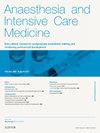Physiology of haemostasis
IF 0.2
Q4 ANESTHESIOLOGY
引用次数: 0
Abstract
Haemostasis is a complex process that ensures the maintenance of blood flow under normal physiological conditions and prevents major blood loss following vascular injury. The process is tightly regulated to prevent pathological thrombosis. Normal haemostasis relies on the delicate balance of prothrombotic and anticoagulant processes, where five components play a significant role in maintaining the haemostasis, these include: (i) endothelial cells; (ii) platelets which are key to platelet plug formation; (iii) coagulation factors that are essential to formation of insoluble fibrin clot; (iv) coagulation inhibitors; and (v) fibrinolysis. This article will provide an overview of the current concepts of haemostasis, and through this we will explain how antiplatelets and antithrombotic drugs work, as well as provide a basic understanding of how to interpret clotting tests used to measure coagulation disorders.
求助全文
约1分钟内获得全文
求助全文
来源期刊

Anaesthesia and Intensive Care Medicine
ANESTHESIOLOGY-
CiteScore
0.50
自引率
0.00%
发文量
152
期刊介绍:
Anaesthesia and Intensive Care Medicine, an invaluable source of up-to-date information, with the curriculum of both the Primary and Final FRCA examinations covered over a three-year cycle. Published monthly this ever-updating text book will be an invaluable source for both trainee and experienced anaesthetists. The enthusiastic editorial board, under the guidance of two eminent and experienced series editors, ensures Anaesthesia and Intensive Care Medicine covers all the key topics in a comprehensive and authoritative manner. Articles now include learning objectives and eash issue features MCQs, facilitating self-directed learning and enabling readers at all levels to test their knowledge. Each issue is divided between basic scientific and clinical sections. The basic science articles include anatomy, physiology, pharmacology, physics and clinical measurement, while the clinical sections cover anaesthetic agents and techniques, assessment and perioperative management. Further sections cover audit, trials, statistics, ethical and legal medicine, and the management of acute and chronic pain.
 求助内容:
求助内容: 应助结果提醒方式:
应助结果提醒方式:


